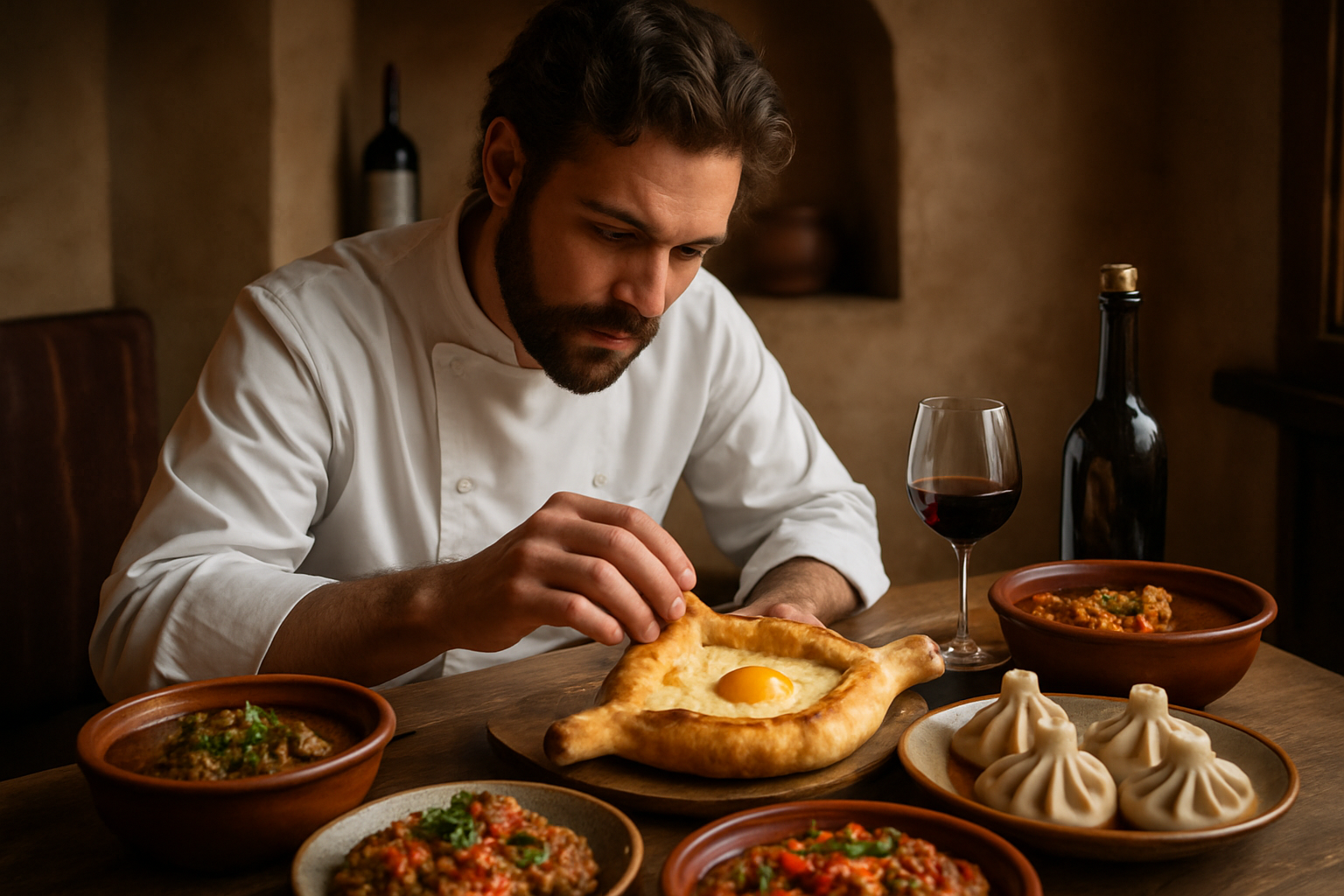Culinary Alchemy: Transforming Humble Ingredients
Prepare to embark on a gastronomic journey that will challenge your perceptions and ignite your creativity in the kitchen. We're diving into the art of culinary alchemy – the magical process of transforming ordinary ingredients into extraordinary dishes that tantalize the taste buds and awaken the senses.

Texture Transmutation
One of the most exciting aspects of culinary alchemy is the ability to completely alter the texture of an ingredient. Through various techniques, chefs can transform solids into liquids, liquids into foams, and even create edible “soils” from nuts and vegetables. Spherification, a technique popularized by modernist cuisine, allows for the creation of caviar-like spheres bursting with intense flavors. Imagine biting into what appears to be a grape, only to have it explode with the essence of olive oil or balsamic vinegar. These textural surprises not only enhance the dining experience but also challenge our preconceived notions of how food should look and feel. By mastering these techniques, home cooks can bring a touch of culinary magic to their own kitchens, turning simple ingredients into show-stopping centerpieces.
Flavor Fusion Alchemy
Culinary alchemy isn’t just about changing textures – it’s also about creating unexpected flavor combinations that push the boundaries of traditional cuisine. By applying scientific principles and a dash of creativity, chefs can create flavor profiles that are greater than the sum of their parts. Consider the concept of flavor pairing, where ingredients are combined based on their shared chemical compounds. This approach has led to surprising yet harmonious combinations like strawberries and basil, or chocolate and blue cheese. Another alchemical technique involves using contrasting flavors to create balance and depth. A touch of bitterness can enhance sweetness, while a hint of acidity can cut through richness. By understanding these principles, home cooks can create dishes that are not only delicious but also intellectually stimulating, challenging diners to reconsider their notions of taste and flavor.
The Art of Molecular Gastronomy
While molecular gastronomy may seem like the domain of high-end restaurants, many of its principles can be applied in home kitchens. This scientific approach to cooking focuses on understanding the physical and chemical processes that occur during food preparation. By harnessing these principles, home cooks can create dishes that are both visually stunning and gastronomically innovative. For example, the use of liquid nitrogen allows for instant freezing, creating smooth ice creams and sorbets with intense flavors. Sous-vide cooking, which involves cooking food in vacuum-sealed bags at precise temperatures, allows for perfect doneness and unparalleled flavor retention. Even simple techniques like creating foams with a hand blender can add an element of whimsy to everyday dishes. By incorporating these molecular techniques, home cooks can elevate their culinary creations and bring a touch of avant-garde cuisine to their dining tables.
Sustainable Alchemy: Waste Not, Want Not
Perhaps the most important aspect of culinary alchemy is its potential to address issues of sustainability and food waste. By applying alchemical thinking to often-discarded ingredients, chefs are finding innovative ways to use every part of a plant or animal. Vegetable scraps can be transformed into flavorful powders, fruit peels can become aromatic oils, and animal offal can be reimagined as gourmet delicacies. This nose-to-tail, root-to-stem approach not only reduces waste but also challenges cooks to find creative solutions and discover new flavors. For example, watermelon rinds can be pickled or candied, creating a delicious condiment from what would typically be thrown away. By adopting this alchemical mindset, home cooks can reduce their environmental impact while simultaneously expanding their culinary repertoire and discovering new favorite dishes.
Culinary Alchemy Tips & Facts
• Agar-agar, a seaweed-derived gelatin substitute, can create hot gels that don’t melt at room temperature.
• Maltodextrin can turn liquid fats into powders, creating unique textural experiences.
• Sodium alginate and calcium chloride are used in spherification to create caviar-like pearls of flavor.
• Transglutaminase, also known as “meat glue,” can bind proteins together, allowing for creative meat presentations.
• Xanthan gum can be used to stabilize foams and emulsions, creating light and airy textures.
• Lecithin, derived from soybeans, is an excellent emulsifier for creating stable foams and sauces.
• Liquid nitrogen, at -196°C, can flash-freeze ingredients, creating unique textures and presentations.
• Sous-vide cooking allows for precise temperature control, resulting in perfectly cooked meats and vegetables.
• Edible flowers aren’t just for decoration – they can add unique flavors and aromas to dishes.
• Fermentation is a form of culinary alchemy that can transform simple ingredients into complex, flavorful foods.
As we conclude our exploration of culinary alchemy, it’s clear that the boundaries of cooking are limited only by our imagination. By embracing scientific principles, innovative techniques, and a spirit of experimentation, we can transform the simplest ingredients into culinary masterpieces. Whether you’re a professional chef or a home cook, the world of culinary alchemy offers endless possibilities for creativity and discovery. So, the next time you step into your kitchen, don’t just cook – create, transform, and alchemize. Who knows what magical dishes you might conjure?





